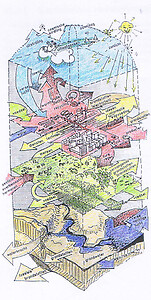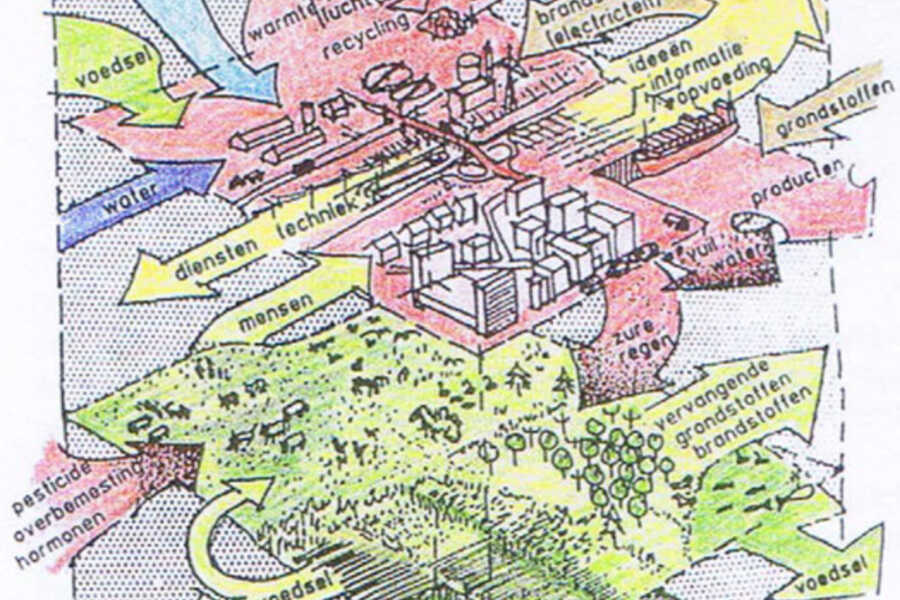Texel as an (Eco) system
In order to develop a sustainable island, Texel needs to be considered as a system, where the social, economic and cultural systems are close related between each other and they can not avoid the rules of abiotic and biotic elements of the nature.
Regarding all these factors, Jón Kristinsson, within this book named Integrated Sustainable Design, shows, for instance, how humans are taking everything from mother nature and they are giving back ground water polluted with pesticides and hardly or non-decomposable chemical and radioactive waste material to the abiotic component. To visualize the environment and all the possible relations with human beings, it is important to take in account all its components including, technical, biotic and abiotic components.

First of all the abiotic component is composed by the non-living elements, such as water, soil, air, heat, light, radiation, among others. Within this component, the earth is considered as an empty moon landscape, in which the resources, metals as well as fossil fuels, yet also water are enclosed.
The second primary component is the biotic one, which includes every living being, such as plants and animals. For example, wood also belongs to this component as fuel or building material. What is more, wood influences the generation of acid rain on forests due to the fact that pesticides, hormones and fertilizers are added to it from industrial farming.
The third primary component is the technical, anthropogenic component, which includes all that has been produced by mankind. It is necessary to mention that this component 'in operation' can be improved, in order to generate a sustainable ecosystem.
Finally, the fourth primary component is composed by the invisible physical shell of the earth, including, air, light, heat, moist, sound, radiation, ozone layer, among others.
The aim is that Texel could be able of renewing constantly. Therefore, it is important to analyze all the possible relations between all the components and figure out which major changes can be done in order to generate a sustainable island. Consequently, it is proposed to reuse and harvest what is available in the island, and provide a clean environment that produces no or minimal waste. Thus, producing an efficient and sustainable island. (Roggema, 2014) (Kristinsson, 2012)
Bibliography
Kristinsson, J. (2012). Environmental Philosophy. In J. Kristinsson, Integrated Sustainable Design (pp. 17-32). Delft: Delftdigitalpress.
Roggema, R. (2014). Towards Enhanced Resilience in City Design: A Proposition. Land 2014 , 460-481.


